Brian Cross and Shawn DeAngelo - What's New in Snow Guards in 2025 - PODCAST TRANSCRIPT
June 17, 2025 at 9:00 a.m.Editor's note: The following is the transcript of a live interview with Brian Cross, VP of Sales and Marketing from Rocky Mountain Snow Guards and Shawn DeAngelo, Western Region Sales Manager from S-5 . You can read the interview below or listen to the podcast.
Intro: Welcome to Roofing Road Trips. The podcast that takes you on a thrilling journey across the world of roofing. From fascinating interviews with roofing experts, to on-the-road adventures, we'll uncover the stories, innovations and challenges that shape the rooftops over our heads. So fasten your seatbelts and join us as we embark on this exciting Roofing Road Trip.
Karen Edwards: Hello everyone and welcome to another episode of Roofing Road Trips from Roofer's Coffee Shop. My name is Karen Edwards and today's episode I'm welcoming Brian Cross from Rocky Mountain Snow Guards and Shawn deAngelo from S-5 to talk about what's new in snow guards. Gentlemen, welcome to the podcast.
Shawn deAngelo: Thanks for having us.
Brian Cross: Yeah, appreciate it.
Karen Edwards: Sure. So Brian, could you just introduce yourself, tell us a little bit about what you do there at Rocky Mountain Snow Guards.
Brian Cross: Absolutely. So I'm Brian Cross. I manage sales and marketing with Rocky Mountain Snow Guards and also work heavily in product development and technical. And essentially what we do is provide products to people that keep snow up on their roofs until it turns into meltwater and stop the snow from sliding off in dangerous ways.
Karen Edwards: Now that's a lot on your plate, sales and marketing and you're involved with technical.
Brian Cross: Yes. It's a great role for me because I like to do a lot of different things. I enjoy the fact that I can sit here, go out and talk to people and have lunch and get to know who's using our products and at the same time take what they tell me, go to the back of our warehouse and fabricate something for them or do load testing for specific situations that they have so that we can ensure that what we're supplying to our customers is what's going to work best.
Karen Edwards: And Shawn, how about you?
Shawn deAngelo: Yeah, my name is Shawn deAngelo. I'm the Western region sales manager with S-5 coming up on seven years this November with the company, which is crazy how fast that's gone. Yeah. I manage the Western sales team. So there's two guys right now beneath me just trying to grow the territory and obviously the market share with what we do at S-5, which is metal roof attachments and specifically snow retention products.
Karen Edwards: All right. So that explains. I was like, okay, what's the connection here between S-5 and Rocky Mountain Snow Guards? And Shawn, you told me before we started talking that S-5 has a lot of distributors throughout the country and Rocky Mountain Snow Guards is one of those distributors.
Shawn deAngelo: Correct. Correct. So we're, we're a metal roof attachment manufacturer and we only sell through distribution and Rocky Mountain in our backyard here in Colorado happens to be one of our biggest and distribution partners.
Karen Edwards: Nice. Okay. So Brian, before we dive into what's new with snow guards, I just want to do a quick 101 about ... And you mentioned this in your introduction and a little bit about keeping snow on the roof and some people may be like, "What? Why do we want to keep the snow on the roof?" So maybe explain a little bit about why someone should use a snow guard and in what situations.
Brian Cross: So really it's a safety thing. And I'm going to take a step further back from just explaining what it is and talk a little bit about the roof product mix that's changed. We look back 20 years and primarily what was on homes with the concrete tile, asphalt shingles and then some traditional product like a wood shaker, wood shingle. With the innovations that have happened since then, there's been a big switch to ... Instead of wood shakes and shingles going to a synthetic or a polymer plastic version of them. Metal roofing has taken off. It's taken a huge share of the market. Asphalt shingles is still big though it is getting a little bit less, bit less. And then the membrane roofing systems like the TPO's, they've added color variants, which has really increased their product share as well or their market share as well.
So with those changes happening, what would typically stay on the roof with those products, it is now coming off and when it comes off, it comes off as an entire sheet. So that entire roof deck is going to release at one point and all of the snow that's on it will come off one slide, which is dangerous. People don't realize how heavy snow is. So on a five square roof, if we get a 12-inch average snowfall in Denver, it's over two tons of snow. It's almost 5,000 pounds. And so it's not a consideration that a lot of people have when they're going to a upgraded roof system from asphalt shingles. And so with that, it causes all sorts of problems. Obviously walkways, doorways, but also snow falling on the decks or hot tubs or generators or AC units, it causes a lot of damage. And so our goal is to keep it on the roof until it turns into meltwater and then can safely go down through the gutters and to stop those slides from happening.
Karen Edwards: Yeah. And there's so many instances where not just on homes, think about businesses, shopping centers, they have arched steep sloped coverings or awnings or any of these kinds of things. So it is important. And you're right about the increase in metal roof, it's just becoming so much more popular. So we're going to be seeing a lot more of that. So I know there's a lot of different kinds of snow guards out there and we are really focused on education because I know a lot of building codes don't require snow guards. This is more like just we need to educate the building owner or the homeowner about the potential dangers because code's not going to ask for it. Is that correct?
Brian Cross: That's correct. I've heard of two situations where the code requires it. Most of the time it's really left up to the contractor, the homeowner or the specifier to go through and determine if they need it. And there's situations where it's not needed, but it is becoming far more prevalent that there needs to be some retention to ensure that there's not damage.
Karen Edwards: Better safe than sorry.
Brian Cross: Absolutely.
Karen Edwards: Yeah. So let's talk about what's new. This year in March we saw National Snow Guard Safety Month. Talk about a way to educate everyone. We were running some press releases about that and doing a lot of talk about snow guard. And that's something I think that we're going to see continue and grow. But we also have a contest that Rocky Mountain Snow Guards is running. Can you tell me a little bit about that?
Brian Cross: Yeah. So it's our, show us your snow guard contest. So what we're doing is we're asking installers or contractors and whatnot to send us photos of their installed systems so that we can A, get some good quality photos of snow retention ... Because a lot of people assume you put things on your roof and it makes your roof ugly and that's not the case. A lot of times it can add aesthetic value and so we're asking for those photos and then we're going through and selecting a couple of winners in each category and giving out cash prizes. So it's a lot of fun. It's a lot of fun to talk with the people that are doing it and see the work that they're doing. And also, it's a nice way to get back to the customers that do a good job. If they put up a good system and they do it well and the homeowner loves it because it looks good, it's a good way to reward them.
Karen Edwards: Right. And who doesn't want to show off their work? We always love seeing pictures of beautiful roofs and those that are featuring snow guards, send them in. We've got that contest up on Roofers Coffee Shop, so you can just head on over there. There's information on there about how you can send in your photos and I'm sure you guys have that information on your website as well, Brian.
Brian Cross: Yeah. We do. We've got a banner on our website and also we're sending information out with any order that's going. It talks about the prizes, it talks about the entry forms, what we need for photos. It's all readily available. So I suggest if anybody's done some snow retention with us to check it out because you've already done the work and if you've got some good pictures, why not get a little cash out of the deal?
Karen Edwards: Right. Why not? I love it. Okay. So Shawn, can you talk a little bit about how these snow guards are installed on a metal roof? Because anytime you're putting something on a metal roof, you want to be really careful, right?
Shawn deAngelo: Absolutely. Absolutely. It depends on the system you're installing, but we do have five or six different snow retention systems. As you mentioned, all specific for metal roofing only. But they are basically attached or mounted with a bracket or a clamp that goes into the metal roof or that attaches onto that seam of the roof. I don't know how familiar you're with metal roofs, but there's many different variations out there. There's many different kinds of profiles, shapes and sizes. So we manufacture and we design specific clamps to fit that specific roof type. So once you know what clamp that is, then you would essentially use that to attach it to the seam or to the roof and then you can hook your bar system, your snow bar on top of that clamp. So each system is a little bit different. That's the high view of it, but that is basically the process of installing it. It's pretty simple. Mostly it's contractors that are doing the installs on new construction work, but it could even be a mom and pop or anybody can basically do it if it's on your home. So it's pretty easy.
Karen Edwards: Excellent. So installing is easy, but how about knowing what style snow guard to choose and how many and where to put them? How do you help with that?
Shawn deAngelo: Great question. And mostly what it comes down to when it comes to style is just personal preference. Aesthetics. What you think looks the best. Because they all work, they're all engineered and designed to work and to last the life of the roof. When it comes to understanding exactly what you need, like a bill of materials and how much quantity you need, so you can essentially place an order through Rocky Mountain Snow Guards, we have a whole team internally, our application engineers that can help assist with that. We'll need some basic project information like what type of roof do you have? What's the slope? Where is it located? But once we have some basic project information, we can help calculate, do the layout, provide the bill of materials, so you know everything you need and then Rocky Mountain can provide the price for that.
Karen Edwards: Excellent.
Shawn deAngelo: S-5 is outstanding as far as the testing of their material. They've gone through and they've tested every clamp on the majority of the seams that are in the world. So they go through and they do the legwork to do the testing. And so when they give you a recommended layout, they have faith that it's going to be incredibly effective.
Karen Edwards: Nice. Yeah, that's important because nobody wants a failure and nobody wants a callback. Right?
Shawn deAngelo: Absolutely not.
Karen Edwards: Okay. So Brian, you guys have a new product to talk about with Rocky Mountain Snow Guards? Yeah. Tell me what is new. Isn't a snow guard just a snow guard, just a snow guard?
Brian Cross: You would think. Then you talk to the contractors that are out in the field and they see a big difference as far as ease of installation or the strength of the guard. So what we came out with this year, it's called the Everest Guard or the EG. We took one of our products that we've had that's done incredible in certain regions and we redesigned it to make it more cost-effective, but also a lot easier to work with. So we took the Rocky Guard, which was one of our flagships. We've been selling it for years and years. And we designed it in a way where it can stack within itself. So we're able to get stacks of five instead of one. And we talked to roofers and most of the time when they're putting on the snow retention, they're not taking the full boxes up to the roof. The contractor's coming down, he's grabbing a handful, he's going up and he's nailing.
Well, the problem with the old guards, even though they're incredibly strong and they work great, you'd really be able to carry maybe seven up onto a roof and still be able to safely climb a ladder. And so with this new version, instead of the seven, you'd be able to carry 30 or 40 in one hand.
Karen Edwards: Oh, wow.
Brian Cross: So it's a big improvement as far as the ease of getting it up onto the roof. It also is packaged a lot differently. So for our distribution partners where they have a stock of this on hand that they sell, we're sending them almost double the quantity in half the space, if not less. So it's a big improvement on both ends. We're able to make it stronger. So one of the ways that we did that was we got rid of the riveted system and it's now welded. And so there is really no mechanical fastening to it, which has gotten rid of one of the points of failure. So our old ... The RG, it's ultimate load, if we take fasteners out of the equation, what can the snow guard handle in an ideal situation? It was about 2100 pounds. And the Everest we came out and it's over 2400 pounds. Now, one snow guard is never going to end up holding 2400 pounds of snow on the roof, but it just proves that the product is the strongest on the market for an individual snow guard.
Karen Edwards: Nice. I like that. Yeah. No. You made some changes to make it easier to store, to handle, to use, but also perform better. Can you talk a little bit about the process of getting there? Is this just based solely on contractor feedback? Is your R&D team just always looking for ways to improve and innovate?
Brian Cross: Well, we always want to improve. And we had a couple of specific goals in mind when we went down the road of making a new snow guard. And initially how it started was we wanted to have a snow guard that was a single piece. So the RG and the Everest, they're both a two piece design. So the strap is a separate stamped out portion than the top, which is the pad face. So our goal initially was to make it to where it's just one piece. It's just one piece of coiled metal that's been bent and is able to be installed on the roof. But what we found is that it didn't hold up to what we would deem real world application. So we were having issues where the pad face was flattening out in our testing. And so then we went through and worked with our manufacturer and designed a version that met most of the goals. Stronger, more cost-effective, but also stackable, which was the big point of the single piece is without that pad or the strap, you could stack as many as you wanted. And so what we ended up doing was widening the strap, especially at the pad face and then hollowing it out to where now the snow guard pad is able to just slide inside the strap of the one below it.
It was about a year and a half of building and testing different ways to do it before we finally settled on this design. And the feedback that we've gotten from contractors in the field is that it's phenomenal. We have almost no interest in the original snow guard anymore and everybody is wanting the new guards, which was of course the hope.
Karen Edwards: Right. Yeah.
Brian Cross: Don't want to put product out that nobody wants.
Karen Edwards: That's fantastic. Yeah. I love it. And I love that you do listen to that feedback and you take that into consideration during that process because it's so important. If the contractor finds that it's not easy to work with, they're going to find something else, right?
Brian Cross: Absolutely.
Karen Edwards: And you don't want that.
Brian Cross: No. I'd like to have them be Rocky Mountain Snow Guards people. We'll meet the needs that they have.
Karen Edwards: Well, yeah, it says it in the name. Everyone knows the Rocky Mountains, they get a lot of snow. It's a tough environment and if they can perform there, then they're going to be able to perform pretty much anywhere.
Brian Cross: Absolutely.
Karen Edwards: All right. So Shawn, let's hear from you. What's new and what do we have to look forward to from S-5 and snow guards?
Shawn deAngelo: Brian was mentioning flagship products and we've had one ourselves, it's called Color Guard. It's been around, basically it was the first snow retention system that S-5 came out with 30 or so years ago. So it's been tried and tested for a couple of decades now and it's been people's favorite snow retention forever. And the reason being is it has a two-inch color strip that you can slide into the slot of the face of the color guard of the bar to match the aesthetic of the roof. So when you're down on the ground, it blends in. You can't even really see the snow retention up there, which is a huge plus for a lot of people. And it's been our number one product, our number one seller for years.
But we've had heard from contractors and end users and people that did the install that it could be a little bit easier if we made a few tweaks. So we listened to them and our R&D team got together and started thinking up of ideas and now we have Color Guard 2.0. So that's the newer product that we've just recently launched this past spring a couple of months ago. Just starting to hit the market. We're already seeing and hearing so many people appreciate the changes that we listen to. The install goes significantly faster. The products Color Guard 1.0 and Color Guard 2.0 almost look the same to the naked eye unless you're an expert, but there are little tweaks and stuff to just make the install go a lot more smooth. So I would say that's our number one change in regards to products for this year.
Karen Edwards: Nice. Yeah. People choose metal for many reasons, one of which is it's beautiful. And so when they find out they're going to have to put the snow guards on the roof, a lot of people are like, "I don't know if I want that. What's it going to look like?" So being able to blend in and make it unseeable is a good thing.
Shawn deAngelo: Yeah. Definitely. Definitely. They've appreciated it and we expect Color Guard 2.0 to be exactly like the 1.0 and actually even more so in regards to feedback and how much people like it.
Karen Edwards: Excellent. Okay. Quick question, Brian. Is there a difference in the style of snow guard that someone would use on a residential home versus a commercial building or is it still just a matter of aesthetics?
Brian Cross: Really, the biggest way to discern what would go on that roof is going to be the roof type. So asphalt or generally shingle style products are going to use guards. And overwhelmingly on metal we would use more of a fence. And the difference is is what is going to be best for that roof, both in terms of waterproofing, potential damage and effectiveness. So on standing seam or through fast metal roof, we always do a fence because there's less penetrations/no penetrations in a standing seam, which is a big benefit. Nobody wants to put a sanding seam roof on and then be putting holes all over it. It voids the warranty, it doesn't look good and they have to deal with the waterproofing. Whereas a shingle style roof, say something like a DaVinci or a synthetic, we would primarily use guards unless they have a steeper snow load or I'm sorry, a higher snow load or a steeper pitch. Those are really where we would discern between a fence or guards.
And then as far as the guards themselves say on a shingle roof, we do have differences between retrofit and a new installation. So on a new installation we use longer snow guards, say our Everest 16, which is 16 inches of overall length, which it's a tall guard. And the reason that it's so tall is we want to vary the fasteners underneath the course line to where when they're laying the next course of roof after that's been installed, it's already waterproofed. So we don't have to worry about any sort of water penetration issues or the contractor doesn't have to go through and worry about sealants, which is a pain for them sometimes. So in that situation, we would use a longer guard and then in a situation where the roof was put on a year ago, a contractor didn't warn the homeowner that this roof is going to shed snow, we can go back through with a shorter guard that's typically a little bit shorter than the exposure of that roof and then we face fasten it. And we have some fasteners that we use, they're called wood binders. They're incredible with waterproofing. So they've got a convex head versus a flat head at the bottom. So when they're tightened down, it pulls the gasket to the shank of the screw versus mushrooming it out, which is what a lot of through fasten metal screws would do.
The problem with mushrooming it out is it allows the UV rays to hit it and degrade that washer or gasket and then you're going to have waterproofing issues down the line. So we use that because we've had tons of A, installations with no issues, but also we've done testing on it to ensure that it's going to work. And on a retrofit that mixed with some sealant underneath the snow guard, between the roof deck and the snow guard, that solves all of that issue. So it depends on a lot of different situations. Pitch, snow load roofing material and what type of installation it's going to be.
Karen Edwards: Right. So the best thing to do if you're unsure, is to ask the experts at S-5 or Rocky Mountain Snow Guards. You guys don't charge for doing a layout and design for the system, right?
Brian Cross: Correct. Correct.
Karen Edwards: Quite the benefit. Take advantage of it. And then last but not least, Brian, how long is the show us your snow guards contest?
Brian Cross: July 31st is the deadline.
Karen Edwards: Excellent.
Brian Cross: Going or the next two months.
Karen Edwards: We'll make sure this podcast is up and out there and encourage you guys all to send in your photos with snow or without snow, right? Show them at work and show them not at work.
Brian Cross: Yeah. And a lot of times without snow is a better representation of what it's going to look like to a homeowner. We trust it to hold the snow up there.
Shawn deAngelo: Sometime the snow, if the snow gets too much, you might not even be able to see it, but you'll see it's doing its job, so.
Brian Cross: Exactly.
Karen Edwards: Yeah. All right. Yeah. So get those photographers lined up and take those photos. It's good not only for Rocky Mountain Snow Guards wants to see them, but for you as a contractor to be able to showcase your work and show other customers what it can look like.
Brian Cross: And also there's some benefits to the contractor outside of the cash grand prize is we go through with and with all the winners, we'll do a press release with the company and we'll also share it on different social media outlets. And I'm sure we'll promote it through Roofers Coffee Shop. But we'll go through and we'll do a full profile on your company, on the project, what product was put on the house as far as roofing and who did it, some quotes. And so it's a good way to add publicity for the contractor and show, Hey, we do good work and it's recognized.
Karen Edwards: Right. Yeah. If a contractor was going to hire a marketing firm to do project profiles and help them get publicity, that costs a lot of money. So there's a lot of value in addition to the cash that is coming with that. And all you got to do is send out a picture. It's that easy.
Brian Cross: Yeah. Absolutely.
Karen Edwards: All right. Well, Brian, Shawn, I want to thank you both for being here today. I thought it was a great conversation. I learned a lot. Thank you. And I look forward to seeing all those photos coming in. As we mentioned, you can go to Rocky Mountain Snow Guards' website to submit your photos or you can find information about it on Roofers Coffee Shop. And to learn more about Rocky Mountain Snow Guards visit their directory, all that information is there, their contact information. And thanks for being here. Shawn, Brian, it was a pleasure.
Shawn deAngelo: Absolutely.
Brian Cross: Thanks for having me. Yeah.
Karen Edwards: All right. And I just want to make sure that I mentioned that S-5 has these tools available on their website. S-5.com. You've enhanced the customer user experience on your homepage. The tools can be found right at the top of the page. There's a snow retention calculator that's been completely rebuilt. It's very user-friendly. It's fast, it's an efficient way to enter the project and roof details. And it supports mixed roof types now, which is fantastic. Your snow load calculator is a standalone tool. It also integrates with the snow retention calculator, calculating roof snow loads based on ground snow load, the roof details and the building specifics. You've got load test tables that have increased speed improvements. It's a smoother user experience and more responsive as well. So these tools are all available for everyone to use. And then down the line, they're going to be on the Rocky Mountain Snow Guards website as well. Yeah. And thank you everybody out there for listening today. We encourage you to follow us on social media, subscribe to our podcast on your favorite podcast platform because we hope to see you on a future episode. Bye-bye.
Outro: If you've enjoyed the ride, don't forget to hit that subscribe button and join us on every roofing adventure. Make sure to visit rooferscoffeeshop.com to learn more. Thanks for tuning in and we'll catch you on the next Roofing Road Trip.
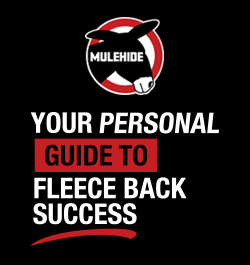

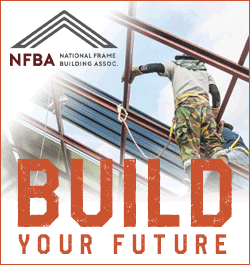


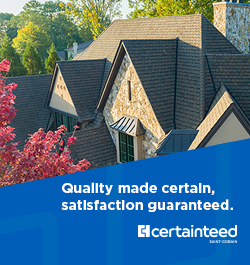

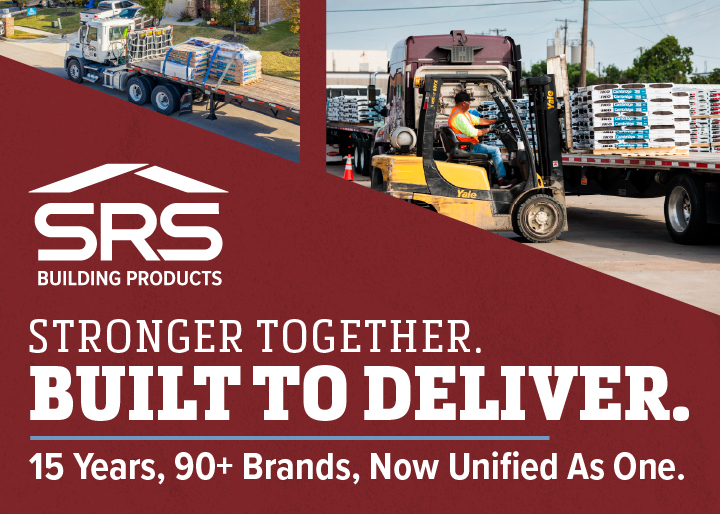
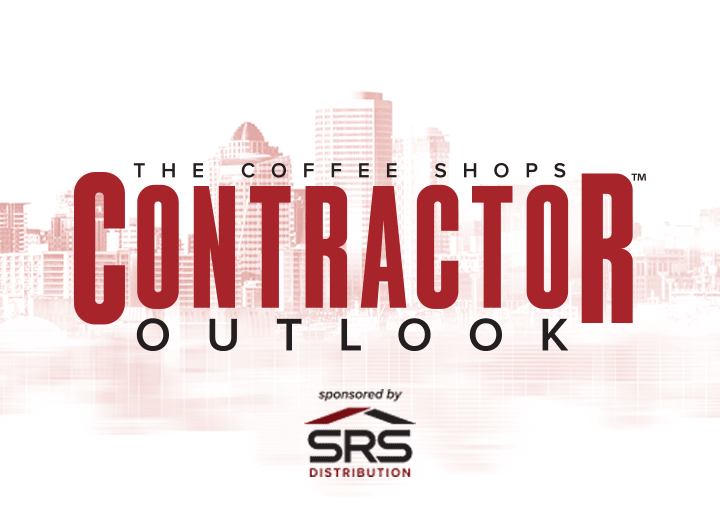


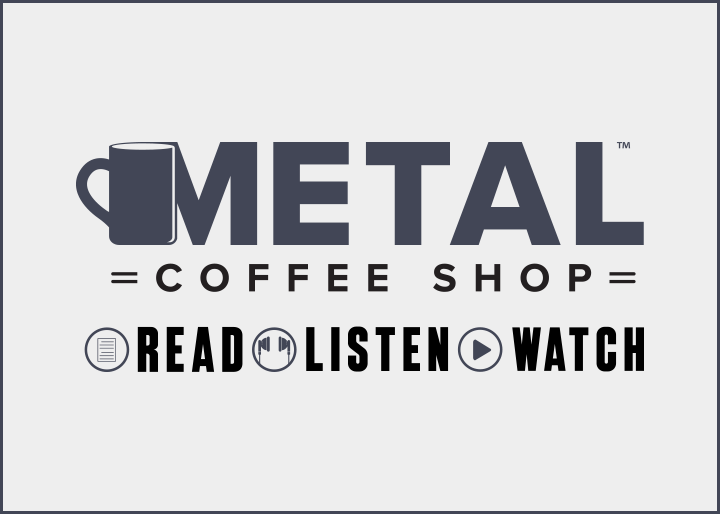




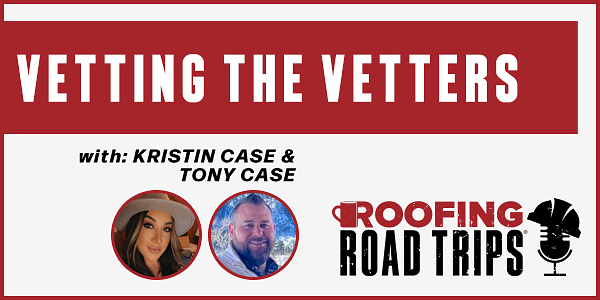


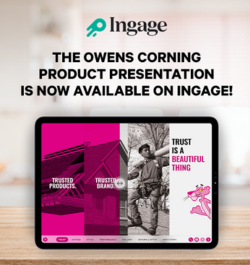

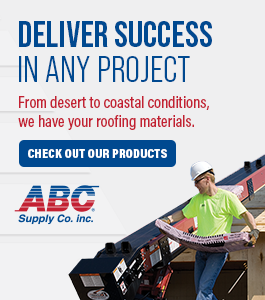
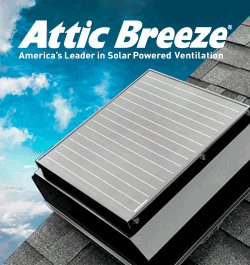

Comments
Leave a Reply
Have an account? Login to leave a comment!
Sign In